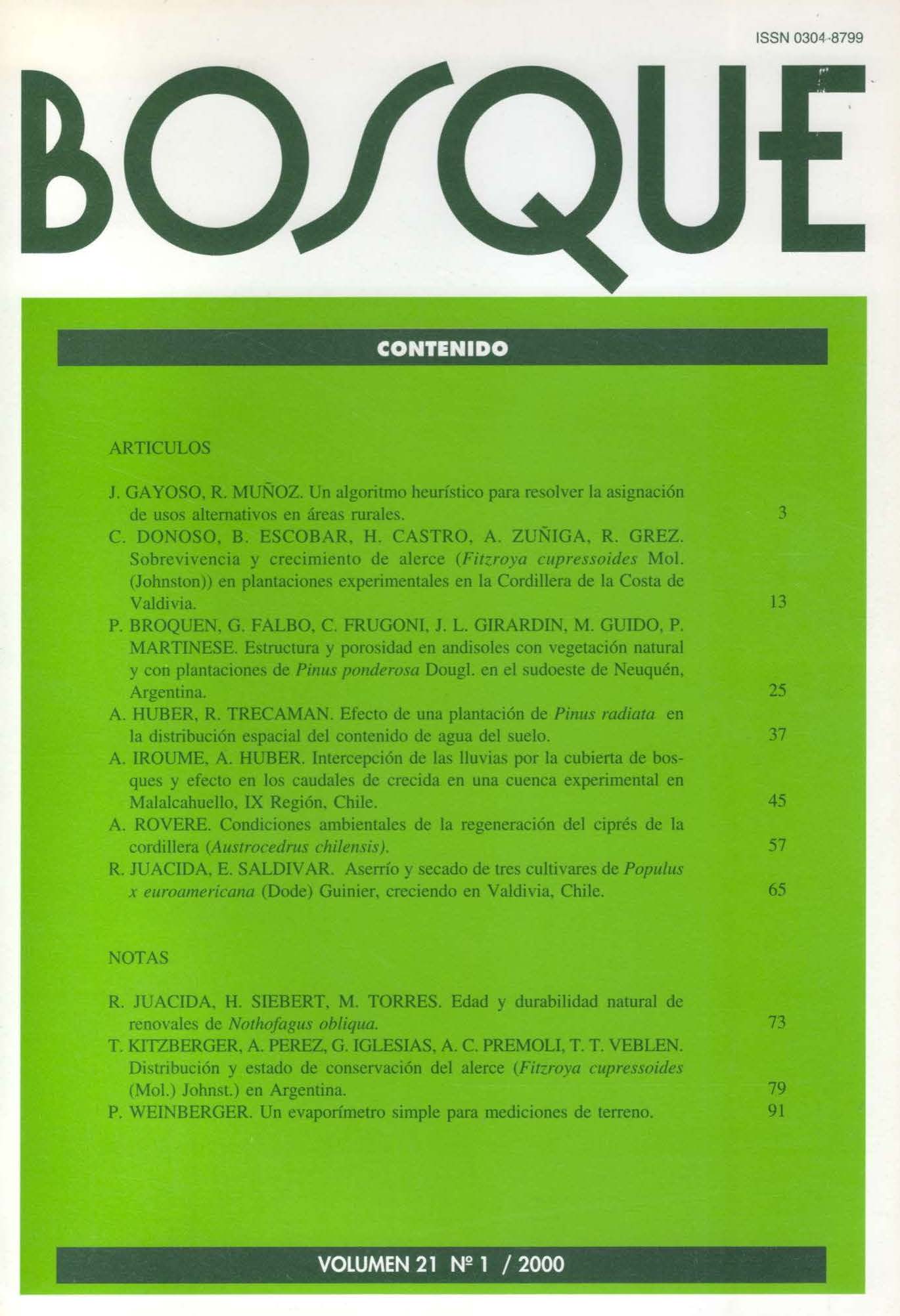Age and natural durability of second growth forest of Nothofagus obliqua
Main Article Content
Abstract
The natural resistance to the fungus, Gloeophyllum trabeum, in nine roble trees (Nothofagus obliqua) from 45-70 years old was measured over a period of four months using the accelerated process.
The following variables were considered in the study: height of the shaft, age of the trees and the location of the fungus in the diameter. A roble tree, over 100 years old, was used as a control and the trees were taken from Fundo Arquilhue, Xth Region. The assay method employed was the standard method proposed by the Federal Office for Testing Materials, BAM-Berlin (Kerner-Gang 1984), and improved by several scientists based on the mass loss of wood exposed to the direct action of the xilophagous fungus. The results of the loss of mass enabled us to determine the potential class of resistance of the wood tested according to the classification proposed by Findlay. The roble wood studied showed high resistance from 45 years on. Between 45-50 years, it presented an average mass loss of 9.4%; in trees between 60-65, the average value was 5.3%; and in trees between 65-70, this value was 7.7%. The control roble tree presented a good resistance to decay until the 60-70 year rings. Then, resistance of the wood close to the pith began to decrease.

